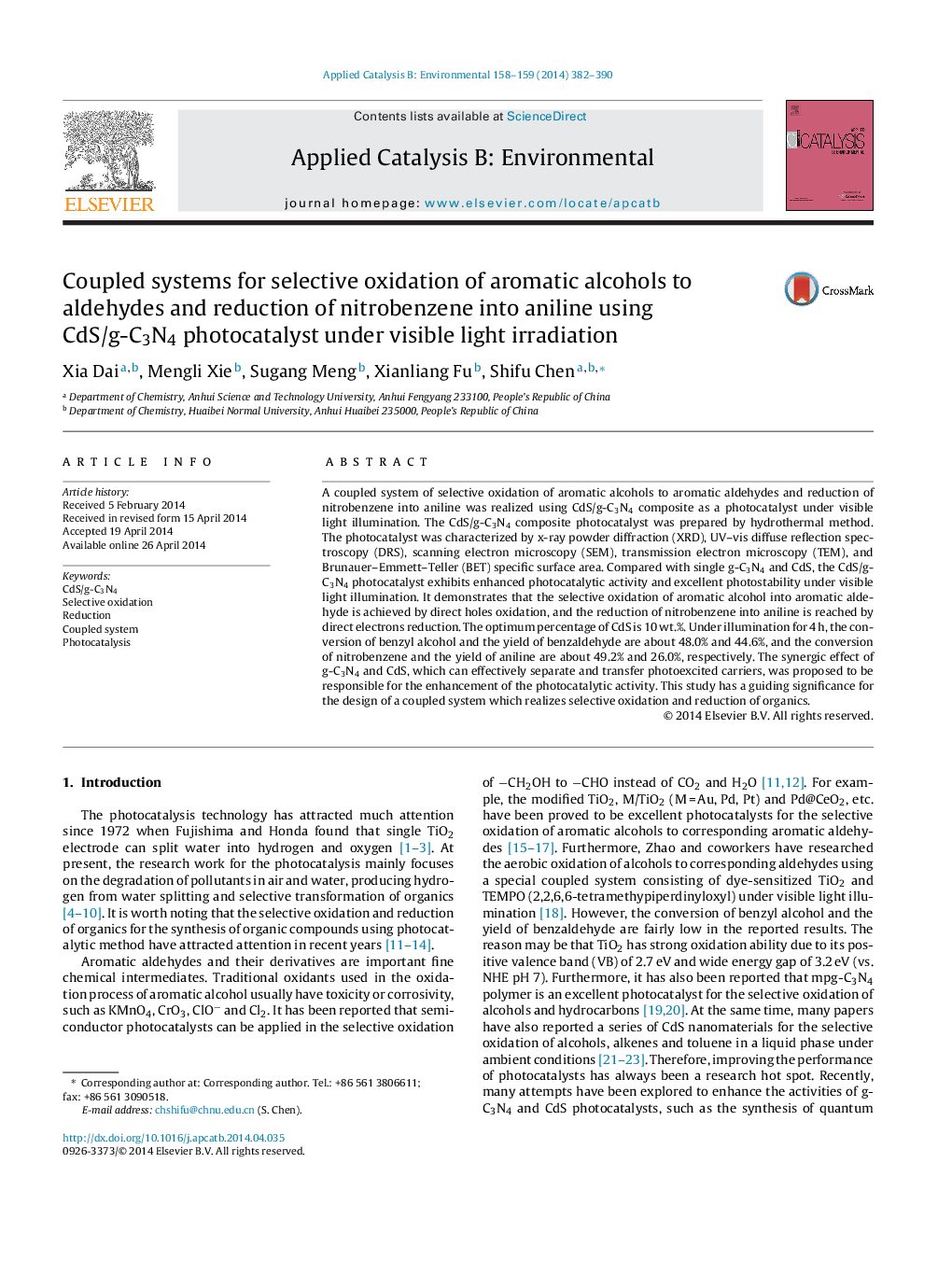| کد مقاله | کد نشریه | سال انتشار | مقاله انگلیسی | نسخه تمام متن |
|---|---|---|---|---|
| 45893 | 46426 | 2014 | 9 صفحه PDF | دانلود رایگان |

• A coupled system for selective oxidation and reduction of organics was realized.
• The CdS/g-C3N4 composite photocatalyst was prepared by hydrothermal method.
• The CdS/g-C3N4 photocatalyst exhibited enhanced photocatalytic activity.
• Selective oxidation and reduction were achieved by holes and electrons, respectively.
A coupled system of selective oxidation of aromatic alcohols to aromatic aldehydes and reduction of nitrobenzene into aniline was realized using CdS/g-C3N4 composite as a photocatalyst under visible light illumination. The CdS/g-C3N4 composite photocatalyst was prepared by hydrothermal method. The photocatalyst was characterized by x-ray powder diffraction (XRD), UV–vis diffuse reflection spectroscopy (DRS), scanning electron microscopy (SEM), transmission electron microscopy (TEM), and Brunauer–Emmett–Teller (BET) specific surface area. Compared with single g-C3N4 and CdS, the CdS/g-C3N4 photocatalyst exhibits enhanced photocatalytic activity and excellent photostability under visible light illumination. It demonstrates that the selective oxidation of aromatic alcohol into aromatic aldehyde is achieved by direct holes oxidation, and the reduction of nitrobenzene into aniline is reached by direct electrons reduction. The optimum percentage of CdS is 10 wt.%. Under illumination for 4 h, the conversion of benzyl alcohol and the yield of benzaldehyde are about 48.0% and 44.6%, and the conversion of nitrobenzene and the yield of aniline are about 49.2% and 26.0%, respectively. The synergic effect of g-C3N4 and CdS, which can effectively separate and transfer photoexcited carriers, was proposed to be responsible for the enhancement of the photocatalytic activity. This study has a guiding significance for the design of a coupled system which realizes selective oxidation and reduction of organics.
Figure optionsDownload as PowerPoint slide
Journal: Applied Catalysis B: Environmental - Volumes 158–159, October 2014, Pages 382–390